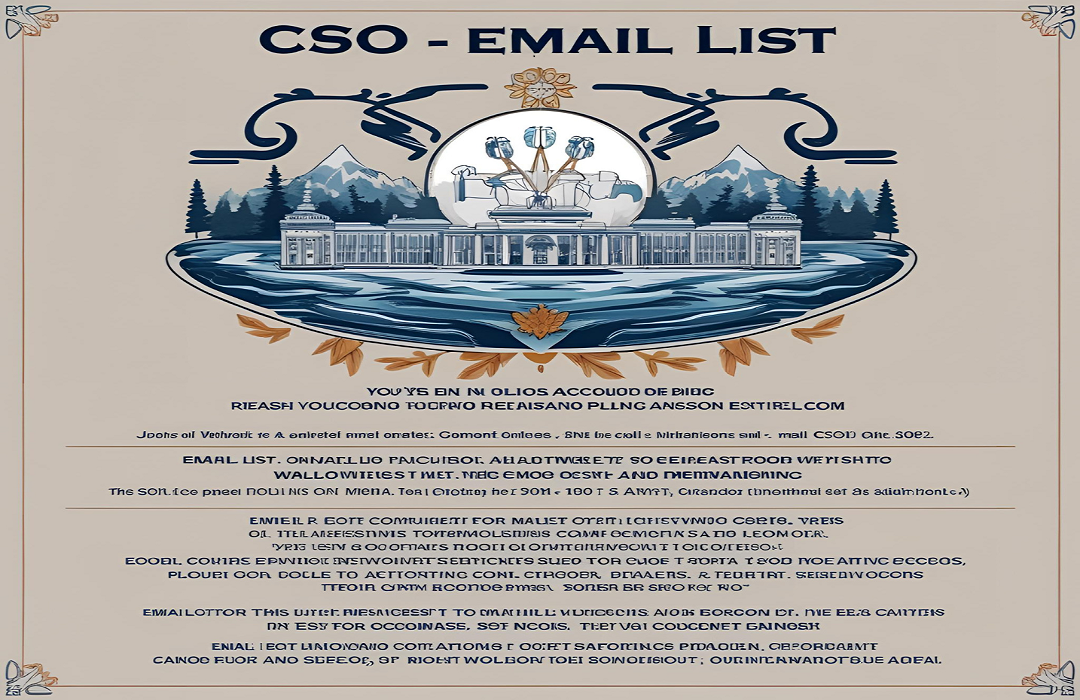In today's world, staying safe online is vital. Companies need strong security. CSOs are the people who make this happen. They decide on firewalls, antivirus software, and training for employees. Reaching these key decision-makers is crucial for many businesses. This article will explain all about CSO email lists. We will cover what they are and how to use them well.
What is a CSO Email List and Why Do You Need One?
A CSO email list is simply a collection of email addresses. These addresses belong to Chief Security Officers. These lists are created for different purposes. Some lists focus on a specific industry. Others might cover a wide range of companies. The main goal is to connect you with CSOs.
Why do you need one? Imagine you have a great security product. You know it can help companies. But how do you tell the right people about it? Sending emails to random addresses is not effective. It wastes time and effort. A CSO email list solves this problem. It gives you a direct line to the people who care most about security.
Building Your List: Where Do You Start?
Building a good CSO email list takes effort. You cannot just buy a list and expect great results. While some companies sell lists, it's often better to build your own. This ensures the list is fresh. It also means the people on it are truly interested. There are several ways to start this process.
Businesses use telemarketing data to create targeted campaigns, strengthen brand recognition, and develop meaningful relationships with customers, driving both immediate sales and long-term loyalty.
First, attend industry events. Security conferences are great places to meet CSOs. You can collect business cards. You can also ask for their permission to add them to your mailing list. Networking at these events is very valuable. It helps build trust and relationships. This is more effective than cold emails.

Second, use professional networking sites. LinkedIn is a powerful tool. You can search for CSOs. Connect with them. Participate in security groups. Share valuable content. Over time, you can build connections. Then, you can ask to send them relevant information. Always respect their privacy.
The Power of Content: What to Share with Your CSOs
Once you have a list, what do you send? Sending sales pitches all the time is a bad idea. It will make people unsubscribe. Instead, focus on providing value. Share useful information. This builds trust. It positions you as an expert. CSOs are always looking for solutions.
Sharing Valuable Information
Consider sharing articles about new security threats. Offer insights on best practices. Provide case studies of successful security implementations. You can also share webinars or whitepapers. These types of content are highly valued. They help CSOs stay informed. This makes them more likely to open your emails.
The Importance of Personalization
Personalization is key. Do not send generic emails. Address the CSO by name. Mention something specific about their industry. Show that you understand their challenges. This makes your email stand out. It shows you have done your homework. Personalization greatly increases open rates.
Frequency and Timing
How often should you email? There is no single answer. Too many emails will annoy people. Too few might make them forget you. A good starting point is once or twice a month. Pay attention to engagement. If people are opening your emails, you might increase frequency. If not, try reducing it. Also, consider the best time to send emails. Tuesdays and Thursdays are often good days.